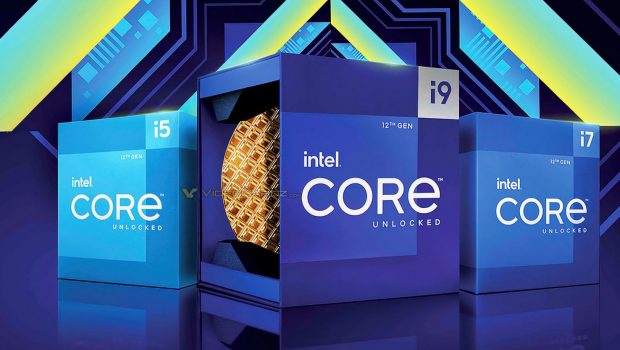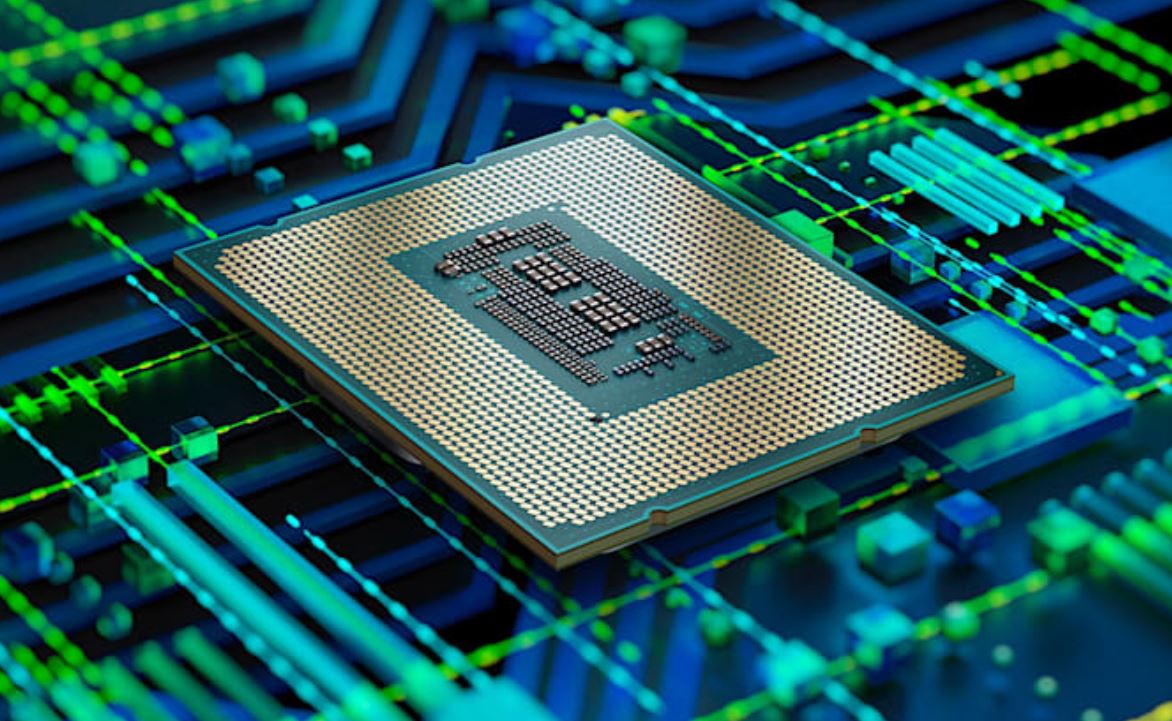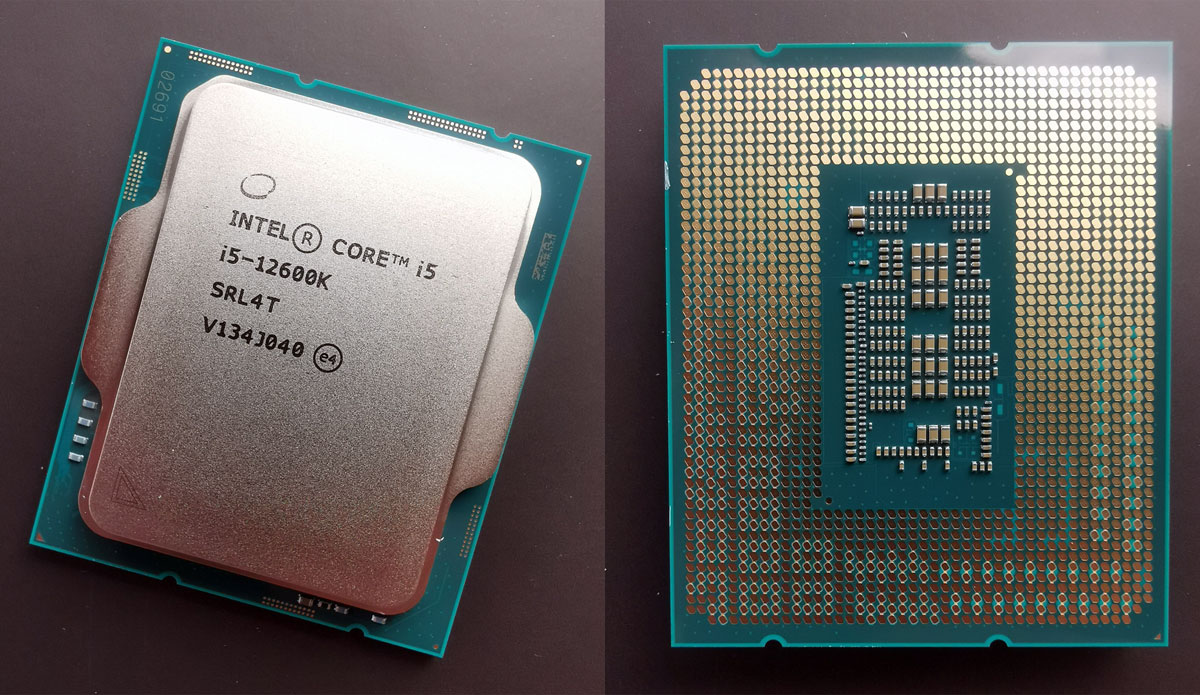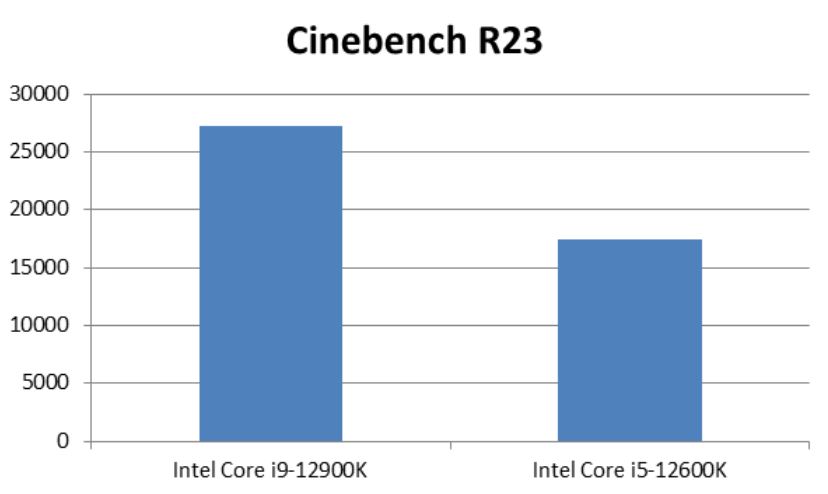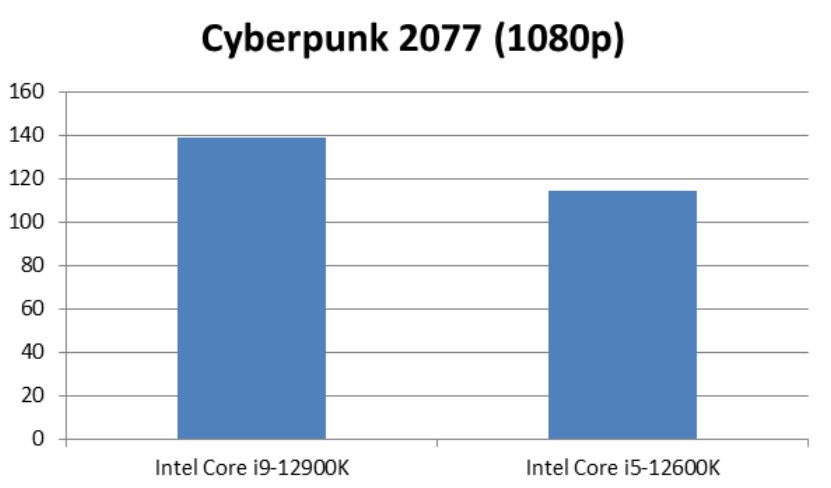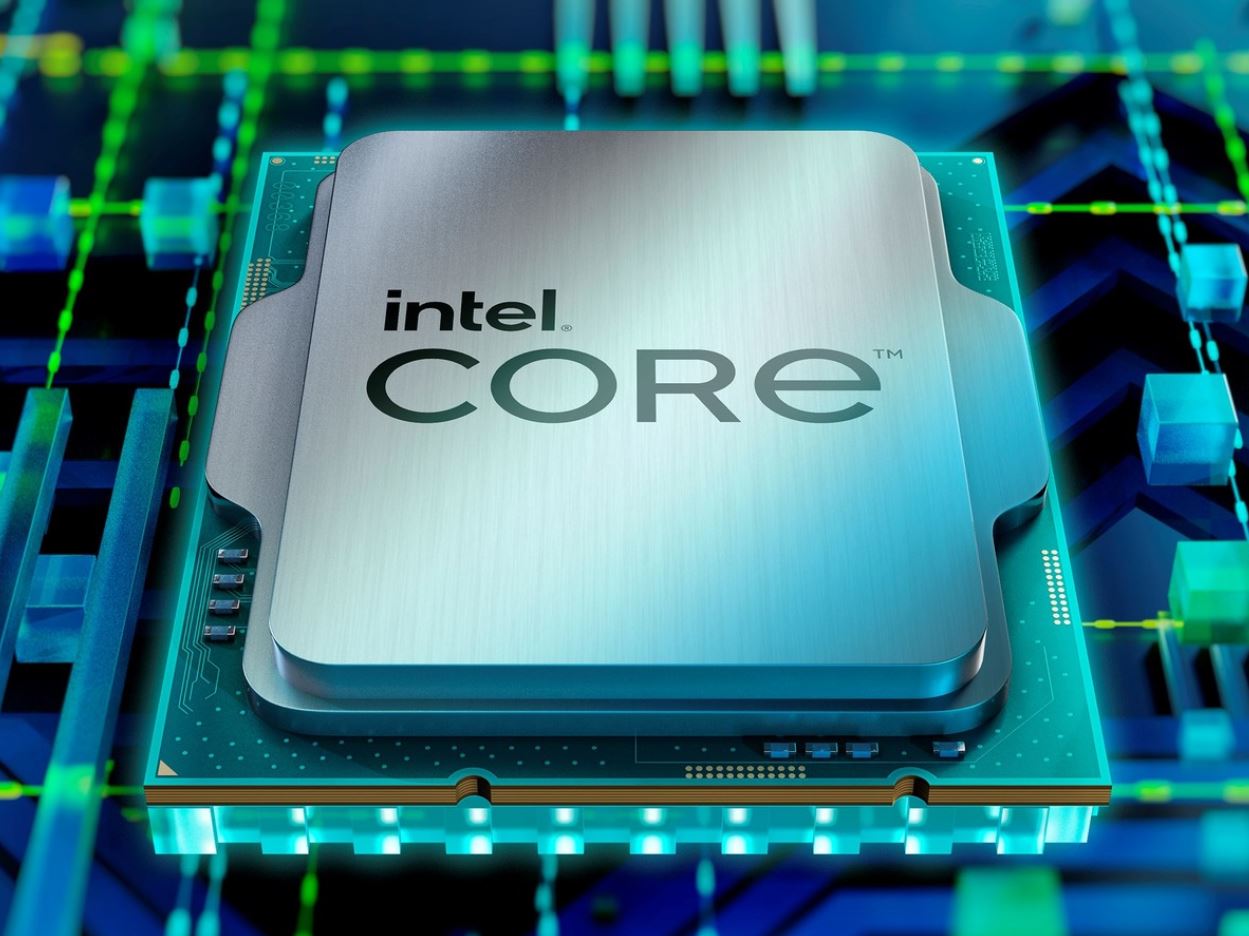Intel i9-12900K & i5-12600K Reviews
Summary: The new Intel i9-12900K & i5-12600K CPU's provide an impressive performance boost which deliver a true next-gen experience, although it does come at a cost with the latest hardware.
4.5
Level up!
Intel have recently launched their next-generation of CPU’s with their Alder Lake series (aka 12th Generation) for desktops and laptops that delivers a true power-boost with their new hybrid design architecture with performance at the forefront. The new hybrid design uses a combination of both high-performance (Golden Cove) and high-efficient cores (Gracemont), including the Intel 7 “10mm Enhanced SuperFin” production process that supports a LGA 1700 socket, PCI Express 5.0 with DDR5-4800. Interestingly, Intel have removed their TDP (Thermal Design Power) terminology which measures output under load and replaced it with Base Power and Maximum Turbo Power, including base frequencies for both P-core and E-core which makes more sense.
Additionally, the premise behind the hybrid CPU is to improve thermals, distributing high-performance and high-efficient cores for particular tasks that in turn creates a faster and more stable system… including better gaming. Furthermore, it gives the user access to 16 x PCIe 5.0 lanes and 4 x PCIe 4.0 lanes which really expands the scope of this new technology, including still being compatible with slightly older hardware. Definitely great for both gamers an PC enthusiasts!
However in order to experience this new CPU from Intel, you do need to use a new LGA 1700 socket motherboard which includes the Z690 chipset. Another highlight of this new CPU is the collaboration between Intel and Microsoft that will allow Windows 11 the ability to monitor the cores to ensure a more efficient experience courtesy of the Thread Director which pushes threads to the ideal core based on what task it is performing. Think of it as the world’s most proficient traffic director.
Furthermore and like most new CPU’s, the new 12th Gen Core processors from Intel supports Thunderbolt 4 and Wi-Fi 6E that helps future-proof this technology for the foreseeable future. With WiFi 6E, it builds on the existing WiFi 6 (802.11ax) standard, including access to a new 6GHz wireless band.
Depending on your needs and budget, Intel have released six new CPU’s based on the Alder Lake chipset that includes;
- Core i9 12900K (reviewed)
- Core i9 12900KF
- Core i7 12700K
- Core i7 12700KF
- Core i5 12600K (reviewed)
- Core i5 12600KF
#: K = Unlocked CPU / F = No Integrated Graphics
The CPU’s that include integrated graphics are based on the Intel Xe Graphics Engine
The i9-12900K is currently Intel’s top of the range CPU that has a lightning fast clock speed of 5.2Ghz, 16-cores and 24-threads plus a wealth of features to maximise your PC experience. The second CPU we sampled from Intel was their i5-12600K which boasts a top clock speed of 4.9Hz, 10-cores and 16-threads that is also no slouch when it comes to gaming or performance.
For costing, the Intel i9-12900K retails for around $999AUD with the i5-12600K at $519AUD (November 2021). An entry level motherboard which supports both CPU’s retails for $319 or if you want the best, you would be look at the ASUS ROG Maximus Z690 Formula D5 Motherboard and a pricey $1299AUD.
So which CPU is for you? Obviously for extreme gamers and PC enthusiasts, you’ll be looking at the Intel Core i9 12900K due to the additional speed, cores and threads to truly maximise your experience. With both CPU’s, you can access the latest DDR5 RAM modules that increases speeds from 3,200MT/s (DDR4) to 4,8000MT/s, including the highspeed PCI Express 5.0 which makes it a dream for graphic cards such as Nvidia RTX 3090 or a Radeon RX 6800 XT which we trialed these CPU’s, including 16GB of Corsair Vengeance 5200Mhz DDR5 RAM.
Further to this, DDR5 RAM modules will allow for additional performance boosts thanks to overclocking with XMP 3.0. So while the initial layout is pricey, you are getting the best and something that will definitely last for quite some years to come. For Intel purists and the question they want answered… does their flagship CPU the i9-12900K defeat the AMD Ryzen 5 5600X? In our tests and benchmarks, the answer is undeniable yes.
Intel 7 12th Gen i5-12600K Processor
|
Intel 7 12th Gen i9-12900k Processor
|
| Processor Number: i5-12600K
Code Name: Alder Lake Lithography: Intel 7 CPU Specifications Total Cores: 10 # of Performance-cores: 6 # of Efficient-cores: 4 Total Threads: 16 Max Turbo Frequency: 4.90 GHz Performance-core Max Turbo Frequency: 4.90 GHz Efficient-core Max Turbo Frequency: 3.60 GHz Performance-core Base Frequency: 3.70 GHz Efficient-core Base Frequency: 2.80 GHz Cache: 20 MB Intel® Smart Cache Total L2 Cache: 9.5 MB Processor Base Power: 125 W Maximum Turbo Power: 150 W Memory Specifications Max Memory Size (dependent on memory type): 128 GB Memory Types: Up to DDR5 4800 MT/s – Up to DDR4 3200 MT/s Max # of Memory Channels: 2 Max Memory Bandwidth: 76.8 GB/s Processor Graphics Chipset: Intel® UHD Graphics 770 Graphics Base Frequency: 300 MHz Graphics Max Dynamic Frequency: 1.45 GHz Graphics Output: eDP 1.4b, DP 1.4a, HDMI 2.1 Execution Units: 32 Max Resolution (HDMI): 4096 x 2160 @ 60Hz Max Resolution (DP): 7680 x 4320 @ 60Hz Max Resolution (eDP – Integrated Flat Panel): 5120 x 3200 @ 120Hz DirectX* Support: 12 OpenGL* Support: 4.5 Multi-Format Codec Engines”: 2 Intel® Quick Sync Video: Yes Intel® Clear Video HD Technology: Yes # of Displays Supported: 4 OpenCL* Support: 2.1 Expansion Options Direct Media Interface (DMI) Revision: 4.0 Max # of DMI Lanes: 8 Scalability: 1S Only PCI Express Revision: 5.0 and 4.0 PCI Express Configurations: Up to 1×16+4, 2×8+4 Max # of PCI Express Lanes: 20 Package Specifications Sockets Supported: FCLGA1700 Max CPU Configuration: 1 Thermal Solution Specification: PCG 2020A TJUNCTION: 100°C Package Size: 45.0 mm x 37.5 mm Advanced Technologies Intel® Gaussian & Neural Accelerator: 3.0 Intel® Thread Director: Yes Intel® Deep Learning Boost (Intel® DL Boost): Yes Intel® Optane™ Memory Supported: Yes Intel® Speed Shift Technology: Yes Intel® Turbo Boost Max Technology 3.0: Yes Intel® Turbo Boost Technology: 2.0 Intel® Hyper-Threading Technology: Yes Intel® Virtualization Technology (VT-x): Yes Intel® Virtualization Technology for Directed I/O (VT-d): Yes Intel® VT-x with Extended Page Tables (EPT): Yes Intel® 64: Yes Instruction Set: 64-bit Instruction Set Extensions: Intel® SSE4.1, Intel® SSE4.2, Intel® AVX2 Idle States: Yes Enhanced Intel SpeedStep® Technology: Yes Thermal Monitoring Technologies: Yes Intel® Volume Management Device (VMD): Yes Security & Reliability Intel® AES New Instructions: Yes Secure Key: Yes Intel® OS Guard: Yes Execute Disable Bit: Yes Intel® Boot Guard: Yes Mode-based Execute Control (MBE): Yes Intel® Control-Flow Enforcement Technology: Yes |
Processor Number: i9-12900K
Code Name: Alder Lake Lithography: Intel 7 CPU Specifications Total Cores: 16 # of Performance-cores: 8 # of Efficient-cores: 8 Total Threads: 24 Max Turbo Frequency: 5.20 GHz Performance-core Max Turbo Frequency: 5.10 GHz Efficient-core Max Turbo Frequency: 3.90 GHz Performance-core Base Frequency: 3.20 GHz Efficient-core Base Frequency: 2.40 GHz Cache: 30 MB Intel® Smart Cache Total L2 Cache: 14 MB Processor Base Power: 125 W Maximum Turbo Power: 241 W Memory Specifications Max Memory Size (dependent on memory type): 128 GB Memory Types: Up to DDR5 4800 MT/s – Up to DDR4 3200 MT/s Max # of Memory Channels: 2 Max Memory Bandwidth: 76.8 GB/s Processor Graphics Chipset: Intel® UHD Graphics 770 Graphics Base Frequency: 300 MHz Graphics Max Dynamic Frequency: 1.55 GHz Graphics Output: eDP 1.4b, DP 1.4a, HDMI 2.1 Execution Units: 32 Max Resolution (HDMI): 4096 x 2160 @ 60Hz Max Resolution (DP): 7680 x 4320 @ 60Hz Max Resolution (eDP – Integrated Flat Panel): 5120 x 3200 @ 120Hz DirectX* Support: 12 OpenGL* Support: 4.5 Multi-Format Codec Engines: 2 Intel® Quick Sync Video: Yes Intel® Clear Video HD Technology: Yes # of Displays Supported: 4 OpenCL* Support: 2.1 Expansion Options Direct Media Interface (DMI) Revision: 4.0 Max # of DMI Lanes: 8 Scalability: 1S Only PCI Express Revision: 5.0 and 4.0 PCI Express Configurations: Up to 1×16+4, 2×8+4 Max # of PCI Express Lanes: 20 Package Specifications Sockets Supported: FCLGA1700 Max CPU Configuration: 1 Thermal Solution Specification: PCG 2020A TJUNCTION: 100°C Package Size: 45.0 mm x 37.5 mm Advanced Technologies Intel® Gaussian & Neural Accelerator: 3.0 Intel® Thread Director: Yes Intel® Deep Learning Boost (Intel® DL Boost): Yes Intel® Optane™ Memory Supported: Yes Intel® Speed Shift Technology: Yes Intel® Turbo Boost Max Technology 3.0: Yes Intel® Turbo Boost Technology: 2.0 Intel® Hyper-Threading Technology: Yes Intel® Virtualization Technology (VT-x): Yes Intel® Virtualization Technology for Directed I/O (VT-d): Yes Intel® VT-x with Extended Page Tables (EPT): Yes Intel® 64: Yes Instruction Set: 64-bit Instruction Set Extensions: Intel® SSE4.1, Intel® SSE4.2, Intel® AVX2 Idle States: Yes Enhanced Intel SpeedStep® Technology: Yes Thermal Monitoring Technologies: Yes Intel® Volume Management Device (VMD): Yes Security & Reliability Intel® AES New Instructions: Yes Secure Key: Yes Intel® OS Guard: Yes Execute Disable Bit: Yes Intel® Boot Guard: Yes Mode-based Execute Control (MBE): Yes Intel® Control-Flow Enforcement Technology: Yes |
As you can see from the above specifications, both the Intel i9-12900K and i5-12600K look great on paper with a whole wealth of features to provide excellent performance and future proofing. Equally, both CPU’s are supported by Windows 11 via the Intel Thread Director, however it is too early to comment on how this will improve the performance of Microsoft’s new operating system, particularly as it is not readily available in the IT wilderness. Given that, there was not much difference between both Windows 10 and Windows 11 plus with gaming, Windows 10 is still the preferred platform for now.
The Benchmarks
When it comes down to it, it’s all about power and benchmarks are an excellent way to gauge the performance of these new CPU’s, including comparing it to others on the market. Our first test was Maxon’s Cinebench R23 which is a readily available rendering engine. Needless to say, it is a number cruncher and both 12th generation CPU’s performed admirably well with Intel’s top CPU knocking AMD’s Ryzen from its top perch. On the standard multicore test, the Intel i9-12900K scored 27,287 with the Intel i5-2600K 17,399.
Next up was Adobe Premier Pro 2021 that is a powerful video editing software package and if you’re creating high-quality video content, particularly 4K, this program ticks this criteria perfectly, however you do need the CPU grunt behind it. Again, two impressive results, the i5-12600K at 841 and the i9-12900K at 901. Again, the Intel i9-12900K is the victor with this CPU, however smaller gains compared to Cinebench for the top CPU, although for the i5-2600K, decent speeds for its price.
Geekbench is another great synthetic benchmark tool that measures your system, including CPU Speed. The results (multi-core only) we received mirrored the leak results from Intel in August earlier this year, however ours were slightly faster. Again, both CPU’s scored well and as expected, the Intel i9-12900K won the contender with 18,493 against its competitors and brethren, with the i5-12600K 12,899.
Another test was the new UL Procyon benchmark which features a great productive test courtesy of Microsoft Office. This includes word, excel, powerpoint and outlook with the Intel i9-12900K scoring an average 9,291 and the i5-12600K at 8,501. Both CPU’s were top in their field and proves that the new 12th gen products from Intel are masters of all.
Virtual Worlds
And gaming? BOOM! The new gaming gods have arrived and when matched with the right graphics card, both the Intel i9-12900K & i5-12600K kick goals. First up is Borderlands 3, an action role-playing first-person shooter video game developed by Gearbox Software and published by 2K Games that scored a whopping 204 frames per second (fps) on the i9 with 193 on the i5. Flawless gaming and even at 4K, it was a spectacular albeit slower experience.
The hit action adventure game of 2020, Watch Dogs: Legion played great on both CPU’s with a top fps of 167 (i9-12900K) and 129 (i5-12600K). Like Borderlands 3, Watch Dogs: Legion on the Intel i9-12900K took the crown, however for the price, the i5-12600K is still a gamer CPU to its soul. Again the higher end CPU trumped its competition.
Marvel’s Guardians of the Galaxy is a grind but it’s a fun grind and one of my favourite games of 2021 as you take control of one of Marvel comics most outrageous superhero teams. Interestingly, there was only 6 frames per second difference between the i9 (111) and the i5 (105) which means it is a very well programmed game from Eidos Montreal. The scores of both CPU’s mirror its competitors but anything over 60 fps is perfectly playable, however once you reach 100+, the difference is silky smooth.
The problematic open-world action RPG, Cyberpunk 2077 has finally been fixed and CD Projekt now have a winner on their hands. Thankfully it plays exception on the new Intel CPUs with the i9-12900K at 139 and the i5-12600K at 114. Needless to say, it looks amazing at full detail and plays and looks a “cyber” dream on our test machine.
Final Thoughts?
Intel have aimed high and delivered the features and performance for their 12th generation CPU’s and both the i9-12900K and i5-12600K are impressive beasts. Whether you’re a PC enthusiast, a gamer or a content creator, the 12th Generation of CPU’s from Intel deliver the power you need when matched with the right architecture.


